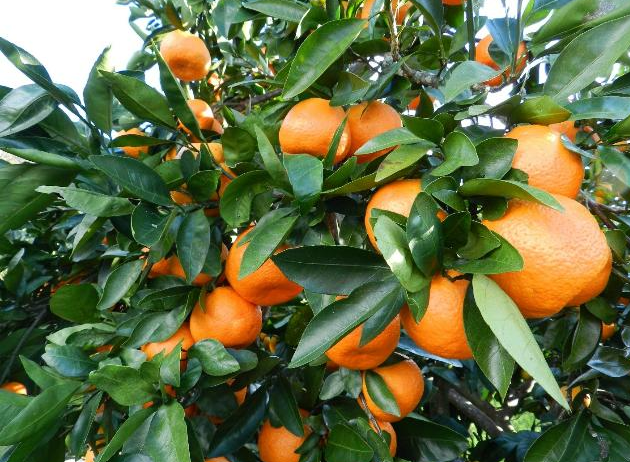
by Ray Bodrey | Feb 2, 2023
The weather is the most important factor determining where certain fruits can be successfully grown. Terms such as chilling requirement and cold hardiness play a major role in both species and variety selection.
Most fruits which grow in the Panhandle are deciduous, meaning that during the winter, they lose their leaves and go through a semi to full dormancy period. This period is a much needed rest and reset for the plant. The cool season actually helps the plant to rebound for another fruiting season and affects how well the plant will yield fruit. This is where the term “chilling hours” comes into play.
Temperatures below 45 degrees Fahrenheit are considered “chilling”. The number of hours below 45 degrees accumulated throughout the winter determines the total amount of chilling hours. Different species of citrus and dooryard fruit, along with different cultivars of these plants differ in the amount of chilling hours need for that all important rest & reset period. Satsuma is a popular fruit trees in our area, as it is by far the most cold hardy citrus. Evidence suggests that the satsuma can survive a temperature as low as 14 degrees Fahrenheit.
Figure 1. Mature satsumas ready for harvest.
Credit. Pete Anderson. UF/IFAS Extension.
What happens if the plant doesn’t receive the needed amount of chilling hours? Plant hormones can be disrupted, and both leafing and blooming could be light and come outside of the normal range of the season. So, where do we stand in the Panhandle for overall chilling hours? Typically, we see approximately 500 hours chilling hours. Therefore, its best to plant citrus and dooryard fruit that have the characteristic of needing 500 or less hours for chilling. Please see this informative document on citrus and dooryard fruit varieties: https://edis.ifas.ufl.edu/publication/MG248
Now, on to the term cold hardiness. By definition, this is the plants ability to withstand cool season temperatures without injury. Most tropical fruits cannot tolerate our Panhandle temperatures. Those of us that cut back banana trees every year know this all too well. To check your plant hardiness zone, please see the USDA Plant Hardiness Zone Map: https://planthardiness.ars.usda.gov/
Before you plant a fruit tree, make sure you understand about its cold hardiness and whether or not it has a chilling requirement. This will both save you money and a headache, in the end. If you’re in doubt about a particular variety, contact your local extension office.
Information for this article can be found at the UF/IFAS EDIS Publications, “Dooryard Fruit Varieties: https://edis.ifas.ufl.edu/publication/MG248 & “The Satsuma Mandarin”: https://edis.ifas.ufl.edu/publication/CH116
UF/IFAS Extension is an Equal Opportunity Institution.
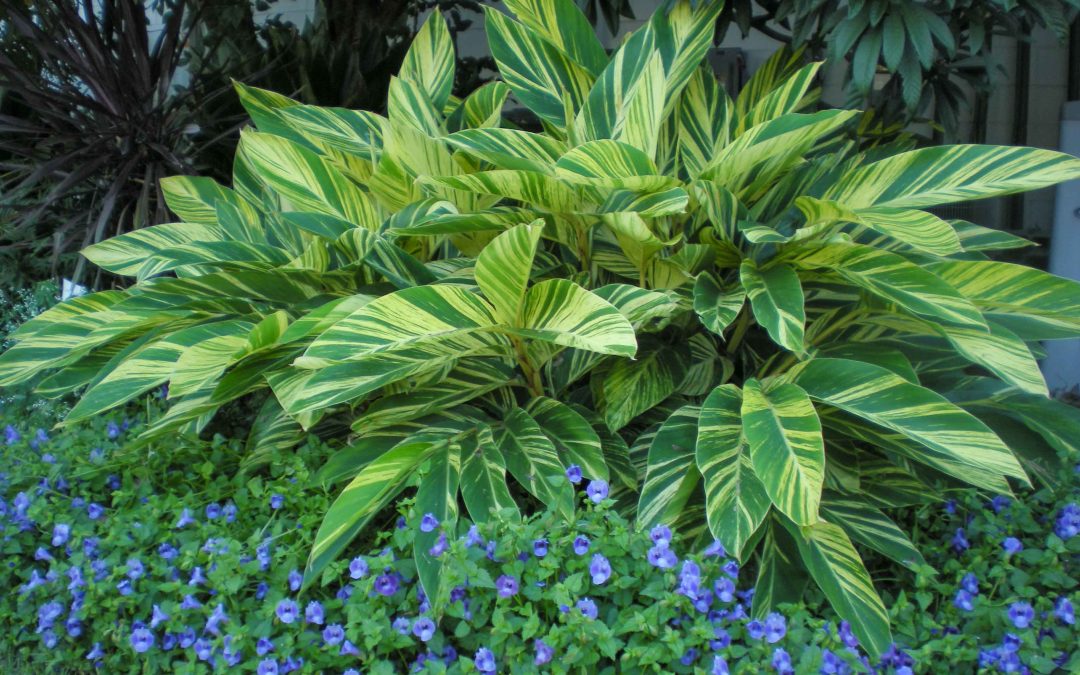
by Molly Jameson | Mar 18, 2022
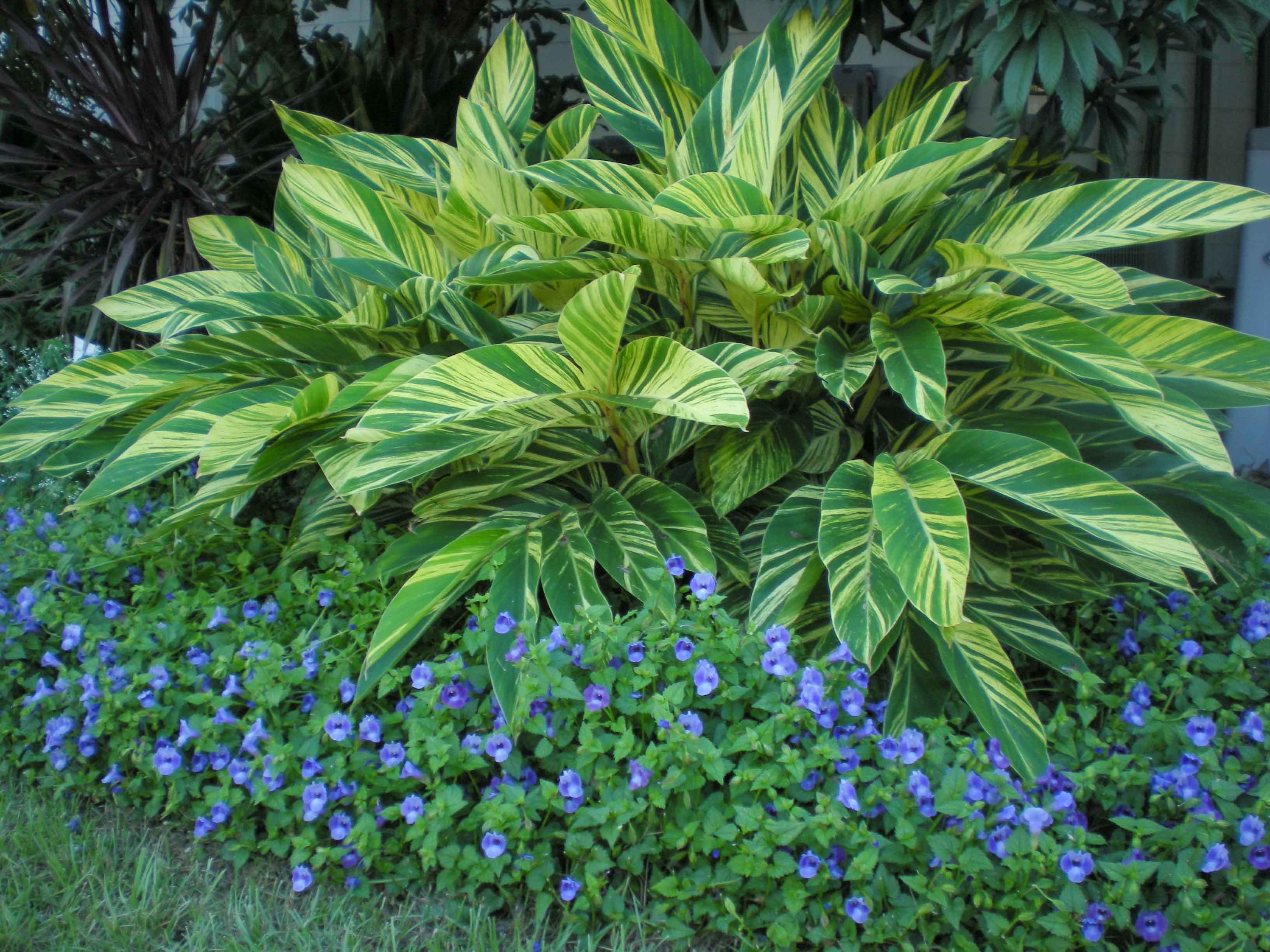
Variegated shell ginger is a good choice for adding color to shaded areas of the landscape. Photo by David W. Marshall.
 What to Do in the Garden in March and April
What to Do in the Garden in March and April
Written by David W. Marshall, UF/IFAS Leon County Extension Agent Emeritus
Except for a couple of freezes, it has been a relatively mild winter. But those freezes were cold enough and long enough to kill many tropical plants almost to the ground. Will we have more freezes? It’s possible, though after we reach mid-March, the probability drops significantly.
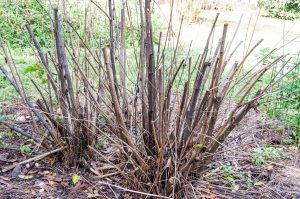
Some plants, such as this firebush, had stems killed back to the ground by the cold and will re-sprout from the root system. Photo by David W. Marshall.
So, when can you start cleaning up all the cold damaged plants? You probably have the urge to do it as soon as possible, as the brown foliage and stems are a little depressing. Many of us have lots of cold-damaged plants and we want to get the cleanup finished. First, though, examine the plants to determine the extent of the cold damage. Scrape the bark with your fingernail or use a pocketknife to see if the tissue beneath is still green or if it has turned brown due to cold damage. In many cases, you will find that the stems have been killed back to within a foot of the ground. On other plants, you may find that some of the stems still appear green higher up and you may not have to cut them back quite as far. If that’s the case, you may wish to wait until mid-March to cut these plants back. In case we have another hard freeze, the damaged growth may offer a little insulation to the undamaged parts of the plant. With most plants there’s no real need to cut them back until the new growth starts popping out, probably in late March.
The stems of butterfly gingers can be completely removed now. Many of these will just pop off when pulled lightly. Others may have to be cut, but it won’t hurt them. Variegated shell gingers, in many cases, will still have some undamaged growth mixed in below the brown leaves. You won’t kill a well-established shell ginger by cutting it back now, but because of the insulating effect of the brown leaves, it’s probably best to wait until mid-March to cut them back.
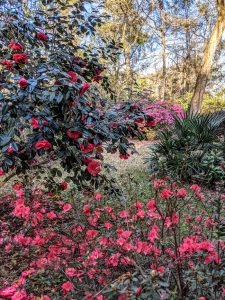
Azaleas and camellias, typical of a North Florida spring, were blooming by late February this year. If you don’t have some of these in your yard, now is a good time to plant. Photo by David W. Marshall.
You may have other shrubs that you wish to prune now also. Wait to prune spring bloomers like loropetalum and azalea until after they finish flowering. Some overgrown shrubs may need to be cut back hard to rejuvenate them, and if you do it now, they will have longer to recover. Before crepe myrtles start putting out new leaves, work on the shape of the tree. Remove poorly placed rubbing and crossover branches by cutting all the way back to the trunk or branch from where they grow. Don’t, however, top the tree unless you are purposely trying to pollard the tree and completely understand how to do it correctly. Otherwise, you will likely end up with a mess.
In mid-March, be prepared to plant warm-season vegetables such as tomatoes, snap beans, pole beans, lima beans, sweet corn, southern peas, squash, and watermelons. So, make sure you have the garden tilled before then. If you wait until April or May to plant, your harvest will be later and the insect and diseases will get much of the crop. Warm-season herbs can be added after mid-March.
Don’t be overly anxious to fertilize your lawn, especially if you have centipede grass. Wait until at least mid-March. Make sure the lawn has been fully green for three weeks before fertilizing. If this pushes you into April, fine. It’s better to fertilize too late than too early. Centipede lawns that are fertilized too early often have spring yellowing problems. St. Augustine grass is more forgiving, but don’t fertilize it either until at least mid-March. Use 6.7 pounds of 15-0-15 fertilizer per 1,000 square feet of lawn area. If the fertilizer doesn’t contain at least a third of its nitrogen in a slow-release form, though, cut the application rate in half.
Most of the weeds in the lawn now are winter annuals that will die out as the weather gets hotter. Just keep your lawn mowed regularly until they do. If you usually still have problems with weeds in the summer, though, you could use a pre-emergent herbicide to reduce the emergence of the summer weeds.
To keep fire ants out of your yard, broadcast a bait formulated product over the entire yard, according to the label directions. Plan to treat again in fall. You can quickly apply the bait using a small hand spreader available from your garden center.
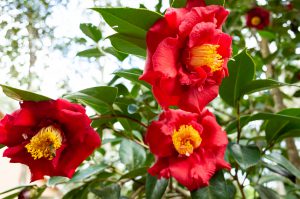
Now, before it gets hotter, add some colorful camellias to your landscape. Photo by David W. Marshall.
Now, before it gets hotter, add some colorful azaleas, camellias, roses, and loropetalum shrubs to your landscape. Also consider fragrant plants such as tea olives, banana shrubs, and sweet viburnum. The sooner you plant these in the spring, the quicker they will get established and grow.
Lavender trumpet vine (Clytostoma callistegioides), crossvine (Bignonia capreolata), coral honeysuckle, and Confederate jasmine are vines that flower during this period of the year. Now is a good time to plant them also.
Don’t forget groundcovers such as liriope, Lomandra, Mondo grass, Dianella (New Zealand flax), African iris, or any of a variety of ferns. Groundcovers planted now will have a full growing season to get established. Groundcovers are often a good choice for plantings in front of the house where you don’t want tall shrubs.
Add some long-blooming seasonal color to your yard this spring. Once we reach mid-March the nurseries will be loaded with many possibilities. Petunias will give you a lot of color in sunny areas for about three months. After the summer rains start in June they normally decline. Pentas will hold up on through the summer and into fall. They prefer full sun but will take a little filtered sunlight too. Sunpatiens® will work in sun or shade and should hold up through the summer. Melampodium will give continuous yellow blooms in sunny areas through summer and into fall. Torenias, especially the trailing or vining types, are excellent for providing low-growing color in areas that receive morning sun but not so much harsh afternoon sun. But there are many other options, too, so visit a full-service nursery with knowledgeable employees that can guide you.
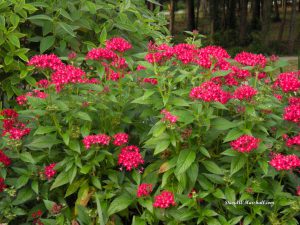
Pentas can be planted in mid to late March and will give color until late fall. Plant in full sun to light shade. Photo by David W. Marshall.
Also, later in the month, start planting perennials such as firebush, angel’s trumpet, cigar flower, and Turk’s cap so you will have color later in the season that will last into fall. These perennials will return each year, even if the tops get frozen back.
There’s no need to fertilize mature trees and shrubs that are growing well. But young plants which you’re trying to encourage to grow will benefit from an application of fertilizer now. The same 15-0-15 that you used for the lawn can be used on trees and shrubs, provided it’s not a weed-and-feed product with an herbicide. The exception would be with palms, especially if you’ve noticed that your palms haven’t been looking that healthy. Use an 8-2-12 or similar palm fertilizer that has four percent magnesium and micronutrients also. If you have a lot of palms in the lawn, just use this palm fertilizer on your whole lawn.
If you didn’t get around to fertilizing fruit plants in February, do it now. After mid-March is also a good time to plant new citrus trees such as satsuma, orange, or grapefruit. You have a full growing season ahead!
Anything that you plant now will need regular watering. That’s what they were receiving in the nursery. Remember that for several months, at least, all the roots will still be in the root ball that was in the pot, even after you put the plant in the ground. So, soak this root ball at least every other day. Don’t rely on a sprinkler system that only comes on once or twice a week. That’s not enough water for the limited root systems of new plants.
Written by David W. Marshall, an Extension Agent Emeritus with UF/IFAS Extension Leon County.
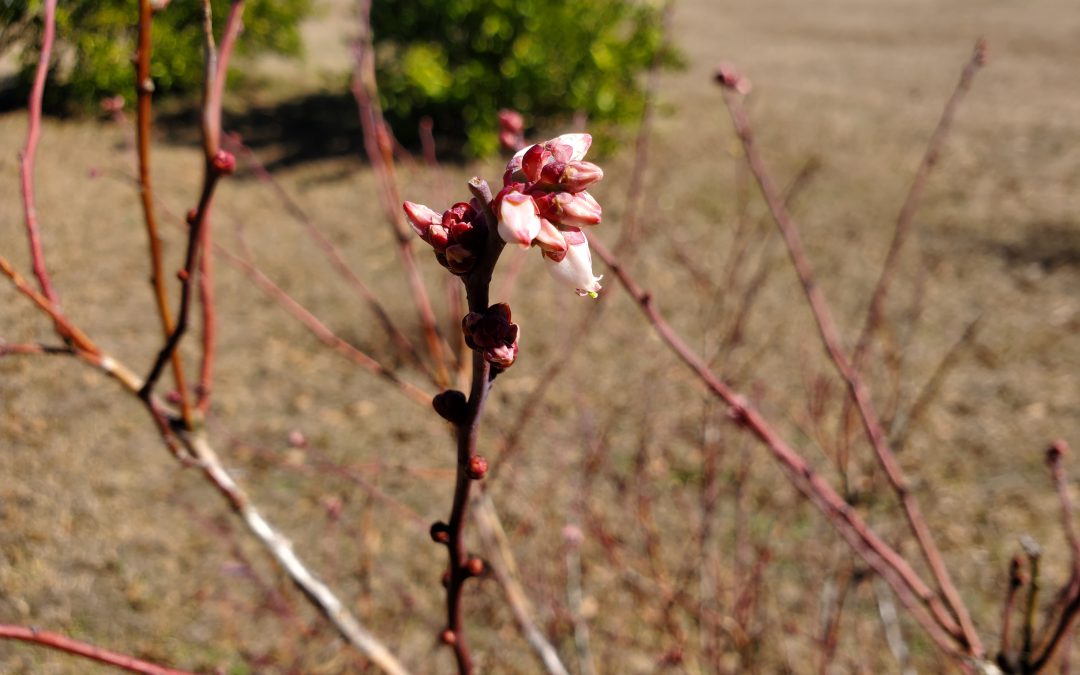
by Daniel J. Leonard | Feb 10, 2022
For being in a place known as the Sunshine State, the Panhandle has been mighty cold and dreary to start 2022! With all the recent bitterly cold weather that’s rolled through our neck of the woods over the last month or so, you may be asking yourself “Is this just a typical Panhandle winter or has it been colder than normal and what is the impact of freezing weather on my fruit trees?” The answer might surprise you!
The easiest way to measure cold and its impact on plants is through a unit of measurement known as a “chill hour”. In its simplest iteration, a chill hour is an hour of time during which the thermometer dips below 45 degrees F. These “chilling hours” are vital to agriculture and our native ecosystems because many plants, especially those that produce fruit like pears, blueberries, peaches, and even citrus, require a certain amount of chill to enter dormancy and develop flower buds for the following spring. All fruit trees have a minimum chilling requirement to initiate flowering depending on variety and too few chilling hours equals poor to no fruit the following year. Too little cold can be just as harmful as too much!
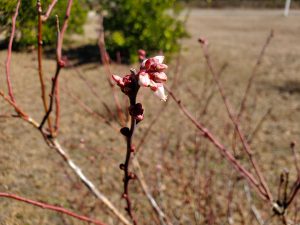
Blueberry beginning to flower after receiving adequate chill hours. Photo courtesy of Daniel Leonard.
Now that we know about chilling hours, the question remains, is this a normal winter or has it been colder than normal? The answer is neither. Based on historical average data from the UF/IFAS weather station in Marianna (a central location in the Panhandle and a good proxy for your local temperatures), as cold as we’ve been in January and early February, we’re still lagging the historical average with respect to chilling hours, and therefore to total cold temperatures. As of February 6th, 512 chill hours had been recorded this winter. This seems like a lot until you check and see that we had 554 chill hours on the same day last year and the historic average is more than 750! Though January and February have indeed been cold this year, the chill hour graph indicates that over the last few years it’s taken longer into the calendar to achieve our first chill hour and that cold weather isn’t pushing as far into spring as it historically has.
There are many potential explanations for the warming trend in the Panhandle but regardless of your preferred theory, backyard fruit growers need to adapt to deal with the change in chill. The primary way to combat fewer chill hours is to evaluate your current fruiting plants and think about replacing high-chill varieties that no longer produce well with lower-chill varieties. If you know the variety you have, look up the number of chill hours that variety requires. If it’s an older variety that requires near the historical chill average or more, you may consider replacing it with a newer variety that requires fewer chilling hours. For example, the popular old blueberry variety ‘TifBlue’ requires 600-700 chilling hours. For most of the previous decade, we have either just barely or not reached that many chill hours, leading to a low fruit set. Replacing ‘TifBlue’ with a newer, lower chill variety like ‘Powderblue’ will probably increase your blueberry production. If you don’t know what variety of fruit tree or shrub you have, just observe the flowering period over the next spring or two. If it doesn’t flower at all or flowers sporadically and you don’t make a good fruit yield, a high chill requirement very likely could be to blame and replacing it could enhance production!
Though we’ve had an intensely cold start to 2022, if current trends continue, this wintry weather will most likely play out before we reach historic averages. That doesn’t mean you can’t grow plenty of backyard fruit, it just requires adapting to the times with lower chill varieties! To keep up with chill hour accumulation, visit http://agroclimate.org/tools/chill-hours-calculator and if you have any questions about fruiting plant variety selection, chilling hours and their effect on plants, or any other horticultural topic, contact your local UF/IFAS County Extension office! Stay warm and happy gardening!
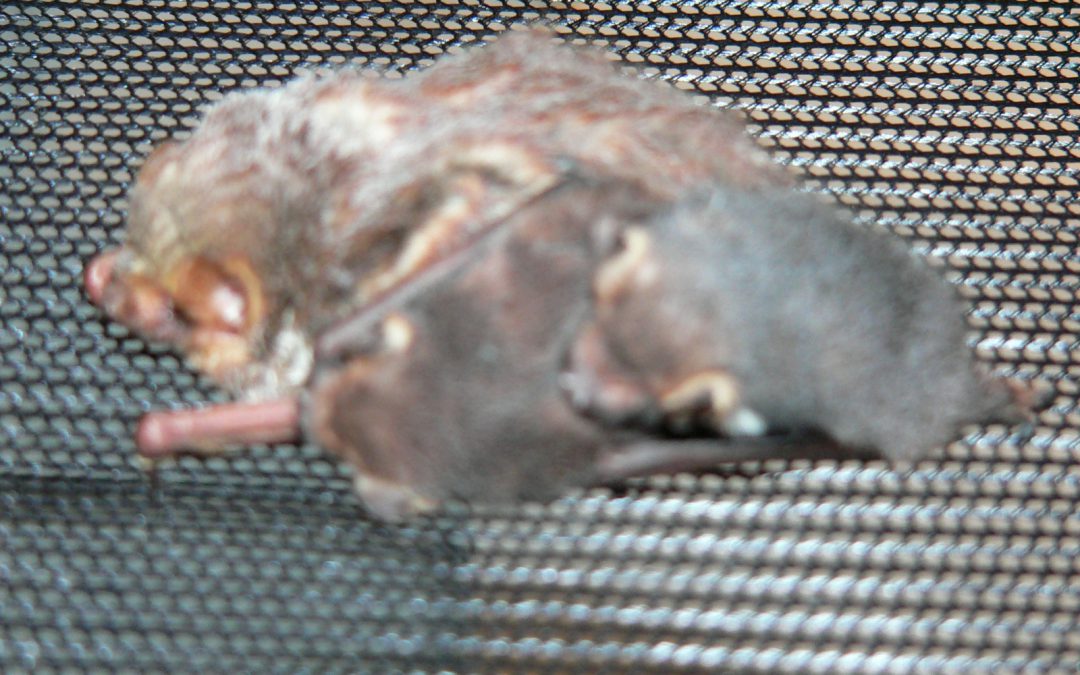
by Carrie Stevenson | Apr 7, 2015
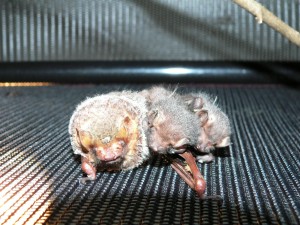
These young Seminole bat pups were separated from their mother and extremely vulnerable in the wild. The local Wildlife Sanctuary nursed them to health. Photo credit: Carrie Stevenson
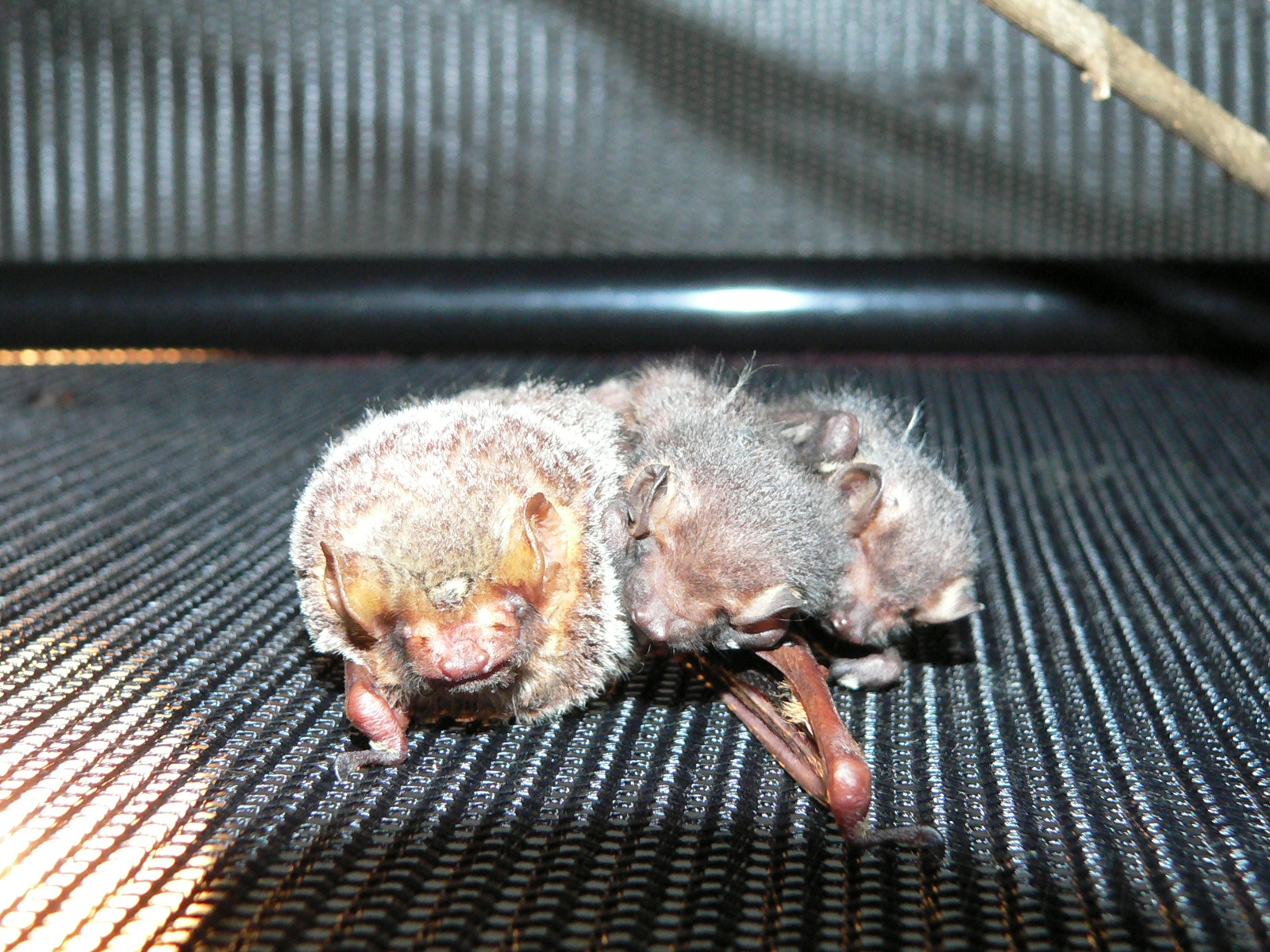 As spring commences and young wildlife of all species are born, everyone’s favorite flying, furry mammal begins roosting season. Ideally, bats will find homes in trees, caves, abandoned buildings, and bat houses, but sometimes they end up in a home. I receive calls often about how to best remove or exclude a group of bats living in an attic or garage. While there are countless benefits (most notably, efficient insect control) to having bats in one’s landscape or neighborhood, most people prefer they not share their own home with them.
As spring commences and young wildlife of all species are born, everyone’s favorite flying, furry mammal begins roosting season. Ideally, bats will find homes in trees, caves, abandoned buildings, and bat houses, but sometimes they end up in a home. I receive calls often about how to best remove or exclude a group of bats living in an attic or garage. While there are countless benefits (most notably, efficient insect control) to having bats in one’s landscape or neighborhood, most people prefer they not share their own home with them.
Bats have a slow reproductive cycle and declining populations in the United States, and are protected by several state laws. According to Florida Administrative Code 68A-9.010 under “Taking Nuisance Wildlife,” it is illegal in Florida to prevent bats from returning to any roosting location from April 16 to August 14. Female bats typically give birth during maternity season to one pup (or rarely, 2-3), which clings to the mother’s fur to nurse for their first few weeks and months of life. Being nocturnal, this means mothers and babies will be inside a dwelling during the day. Typically, if a homeowner is trying to exclude bats from a home, they will put up netting or seal a hole in an attic entry in the evening after bats have flown off to feed on insects at night. However, if this is done during roosting season, young bats left back in the roost while mothers are hunting can get trapped inside a building and will not survive.
This obviously has the potential to cause conflict between homeowners and the bat population. The Florida Fish & Wildlife Conservation Commission has regulatory oversight for bat-related issues, and they will work with citizens to arrange a positive outcome for both the property owner and the animals involved. Bats play an important role the ecosystem as efficient controllers of insect populations.
Unfortunately, bat populations are declining in North America due to a devastating disease called white-nose syndrome and loss of habitat. However, you can help these fascinating animals by installing a bat house in your yard. Keep in mind that bats attracted to bat houses prefer to be in open areas away from trees (where their predators hide), and the house should be installed at least 12 feet in the air. Bat houses can be purchased or built rather simply—keep an eye out for Extension workshops near you, or visit the UF Wildlife Ecology publication, “Effective Bat Houses for Florida” or Bat Conservation International’s website for simple instructions.
To learn more about bats and how to help them, visit this website or contact me or your local County Extension office!












